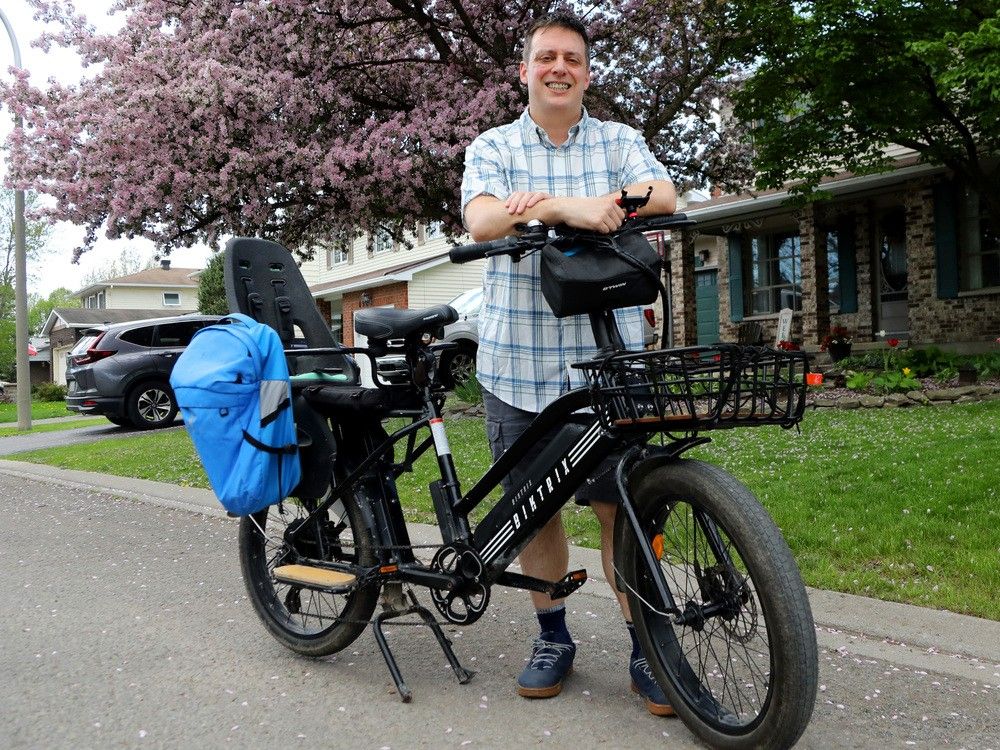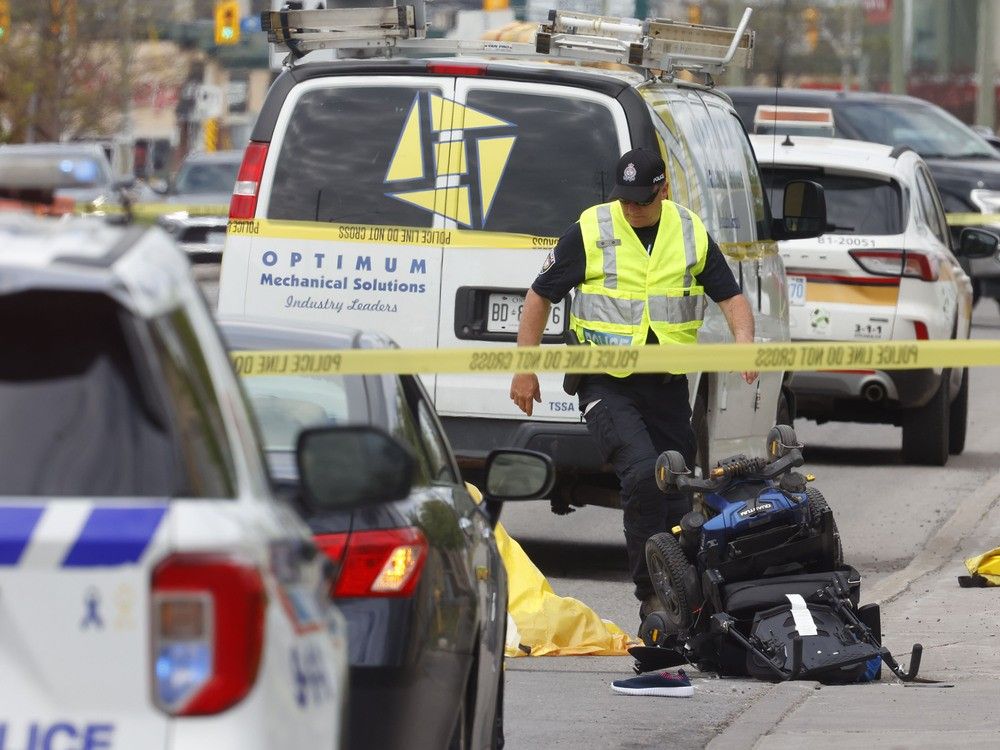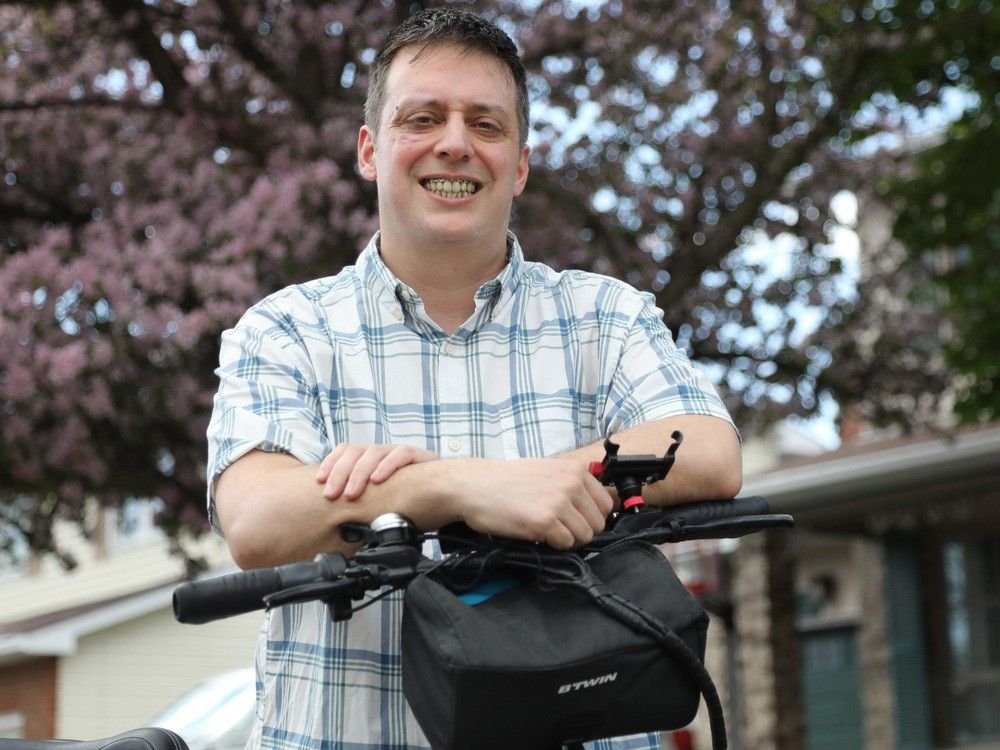Matthieu Gagnon doesn’t remember anything about his collision on April 7. He was biking on Beechwood Avenue and the next thing he remembered was waking up in an ambulance afterwards. It wasn’t until later that he got the whole picture.
During rush hour, just before 9 a.m., with packed lanes, a bus had stopped to let a pick-up truck turn left onto a side street. With no time to stop, the truck turned in front of Gagnon and he ran headlong into it.
“We had the green light, so I assumed the bus would just keep going,” Gagnon said. “I just T-boned the … pick-up truck.”
The collision left him with several facial injuries, a scar and his jaw wired shut for five weeks.
Gagnon is not alone in his pain.
His collision is part of a tragic and familiar scene on Ottawa’s busiest roads. Last week, two pedestrians were killed and another seriously was injured in collisions less than a day apart on an Ottawa thoroughfare.
The first occurred on Innes Road on May 13, leaving one person dead and another in critical condition. The following day, a 60-year-old wheelchair-bound woman was pronounced dead after a cargo van struck her on Industrial Avenue near the Ottawa Train Yards.
Here’s why some Ottawa roadways are more dangerous than others for pedestrians and how they can be made safer.
A “stroad”? What’s a stroad?
The issue that connects Beechwood Avenue, Innes Road and Industrial Avenue is that their road structures are considered “stroads.”
“Stroad” is a portmanteau of “street” and “road,” coined by Charles Marohn in 2011 to describe certain urban thoroughfares that combine elements of two types of roadway.
Streets were designed so that slower speeds would be required to be safe around businesses, neighbourhoods and high-pedestrian traffic. Roads were designed to move vehicles as quickly as possible through traffic and support high-speed environments. A stroad attempts to do both at the same time.
Similar to other stroads across Ottawa, a large portion of Innes has houses, grocery stores and local businesses alongside it. The posted speed limit is 60 km/h and the roadway and is stretched over four, sometimes more, car lanes.
“The important thing about Innes is that it’s the only east-west thoroughfare for three kilometres,” Gagnon said. “It sucks for everybody who lives on this street.”
From January to March 2025, there have been 506 total speeding violations reported near the intersection of Innes Road and Provence Avenue, 1.4 kilometres from the site of the May 13 fatal accident.
There are no speed cameras near the location of the collision on Industrial Avenue near the Ottawa Train Yards. On Smyth Road, a nearby thoroughfare 2.6 kilometres south of Industrial, there were 915 speeding violations from January to March.
Intersections and pedestrian crossings are scarce on Innes, which Gagnon says encourages people to run across an intersection whose light takes too long to change or to catch a bus.
The entrances to businesses and houses located off Industrial create issues because of constant, fast-moving traffic that may refuse to stop for other vehicles turning into parking lots.
Conflict zones
Another danger point is that sidewalks are placed in front of store parking entrances where pedestrians could be crossing as these cars turn in. There are also painted bicycle gutters in some sections of the roads.
“Each one of these spots is a conflict, an opportunity, (that) creates a danger,” Gagnon said.
Alongside many residents in the area, Denis Vaillancourt, president of Queenswood Heights Community Association, says Innes Road is a constant concern for communities across Orléans that live close to the stroad, especially when people are trying to cross it to reach grocery and clothing stores on the other side.
Vaillancourt says he “avoids it at all costs” unless absolutely necessary or when rush hour is over.
“The stores are probably suffering from the fact that people are trying to avoid Innes,” he said.
Vaillancourt explains that to make the stroad safer for all road users the priority needs to be on pedestrian and cyclist safety. He suggests including official pedestrian crossings and separated cyclist lanes along Innes.
“We need to come up with more safety measures for pedestrians and cyclists to use across the whole city,” he said.

Road safety measures
Part of the problem, Gagnon says, is the 85th percentile rule; a measure that helps determine safe speeding limits based on how fast 85 per cent of vehicles travel on roads. Drivers travelling over the 85th percentile speed are considered to be exceeding the safe natural speed limit for that road segment.
This rule relies on the assumption that all road users operate in a safe manner and is a frequent benchmark used in road design.
“This … works really well in a rural environment, where you don’t have a lot of complexity,” Gagnon said. “But it really falls apart when you’re in a city where … the speed limit shouldn’t be the speed drivers are comfortable driving.
“It should be the speed that minimizes the risk for all road users.”
Yasser Hassan, a professor in transportation engineering at Carleton University, says road designs need to factor in the use of the nearby environment and to consider the risks over time as businesses and neighbourhoods begin to appear around high-speed roads.
He says it’s very unlikely to see any businesses close to highways because they were designed to encourage traffic flow and have zero land access.
“We need to design (roads) to be safer for road users based on the level of activity expected around the road,” Hassan said.
Separating the roads from the streets
Matthew Pinder, an engineer and senior integrated mobility consultant at Mobycon, says that stroads were historically longer-distance roads that allowed people to travel across a city. Over time, though, commercial traffic was added to the routes.
He uses Merivale Road and Carling Avenue as prime examples of stroads elsewhere in Ottawa that house several stores, restaurants and apartment buildings.
“(They’re) not fast driving routes. It’s constantly congested,” he said. ”It’s not an efficient place to take a bus through because the buses are always stuck in traffic, and there’s nowhere safe to cycle.”
Traditional fixes, such as widening lanes to solve traffic problems, would get expensive too quickly. The focus, he says, should be on separating what’s a street and what’s a road.
Pinder says Ottawa’s Transportation Master Plan, first introduced in 2013, has “supportive policy language,” but stronger measures are needed to address the stroad issue.
“We really need to be doing aggressive measures to shift how people travel on these corridors,” he said, referring to reducing speeds, converting car lanes into bus lanes and creating separate modes of transportation for all road users.
If the issue of stroads is left unaddressed, Pinder says, the city would be “shooting itself in the foot.”
“We want to encourage housing development in the city, but, in order to do that, we need to create environments developers see as desirable to place housing … projects,” he said.

A local success story
One of Ottawa’s success stories in addressing stroads is Main Street, where the city took away a lane of traffic to create wider sidewalks, cycle tracks and parking, which also allowed for private-sector development.
John Dance, who sits on the board of the Old Ottawa East Community Association, said the changes had been “utterly transformative” and had made Main Street more “livable” and safer for pedestrians and cyclists.
“You no longer feel threatened. It’s a safe route,” Dance said. “It’s such an improvement.”
The renewal project took more than two years and $39 million to transform Main into a complete street, a roadway supporting all users and modes of transportation. Dance said it was a “superb” move on the city’s part.
“It’s something that the community had fought for and wanted for decades,” he said. “This really should be happening more so throughout the city.”
What the City of Ottawa can do
Hassan, the transportation engineering professor, says the city can conduct a road safety audit to assess what features can be improved on stroads and implement measures that would create a safer traffic environment, such as installing more intersections and more speed cameras.
“The premise of measures’ intervention is that it will lead to better safety in design,” he said.
The last road safety audit the City of Ottawa conducted was in March 2024, when a proposed roundabout was introduced at Jeanne d’Arc Boulevard from the intersection of Fortune Drive and Vineyard Drive, to better accommodate bus travel in the area.
It also includes multi-use paths around the roundabout, the addition of bus bays and a driver rest station. Construction is set to wrap up in summer 2025.
Cathy Kourouma, city program manager of Road Safety, said Ottawa’s 2025 Road Safety Action Plan was focused on enhancing existing programs and implementing plans that would prioritize pedestrian and cyclist safety.
The City of Ottawa could not immediately respond to the Ottawa Citizen’s inquiries into road safety audits, but in a statement Kourouma pointed to several city programs focused on pedestrian safety, including implementing solutions to address pedestrian safety concerns, specific pavement markings to indicate pedestrian crossovers and installation of fully protected left-turn phasing.
“Road safety requires a culture change,” she said. “Achieving a lower incidence of collisions resulting in deaths or serious injury requires a combination of countermeasures related to engineering, education and enforcement.”



